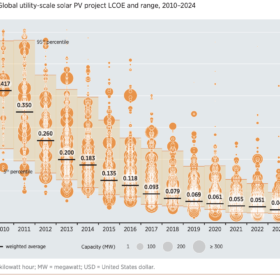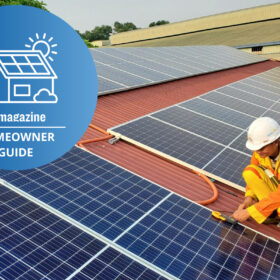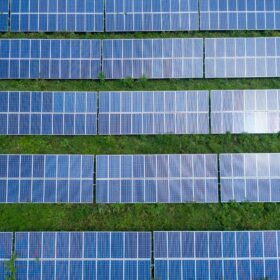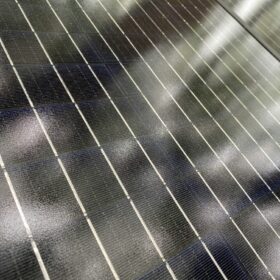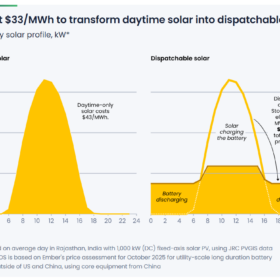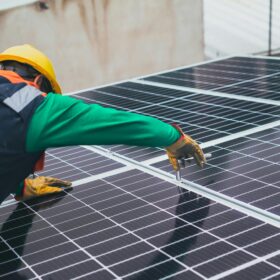California startup installs building-integrated, organic photovoltaic facade
Next Energy Technologies has completed the first installation of its transparent organic photovoltaic glass facade. The 9.3 m2 installation is located at its headquarters in Santa Barbara, California.
Global average solar LCOE stood at $0.043/kWh in 2024, says IRENA
The International Renewable Energy Agency’s latest report finds little change in the global average levelized cost of electricity for utility-scale solar plants year-on-year, while the global average total installed cost of utility-scale solar projects fell by 11%.
Canadian province extends heat pump rebates to apartments, condos
British Columbia’s rebate scheme for heat pump installations now offers up to CAD 5,000 ($3,638) for the purchase and installation of an electric heat pump in suites within multi-unit residential buildings.
Canada invests in Indigenous-led 2.85 MW solar project
The Sādę Solar Initiative will connect a solar array and battery energy storage to an existing microgrid located within the asserted traditional territory of the Liard First Nation.
Canada’s largest off-grid solar project breaks ground
The Anahim Lake Solar Farm in British Columbia, Canada, will provide the Ulkatcho First Nation with renewable energy, reducing the remote community’s use of diesel for electricity generation by almost two-thirds.
pv magazine Homeowner Guide: Understanding the solar installation process
This pv magazine guide to home solar installations helps those who are interested in installing solar but need help making informed decisions. Here we provide insights from installers and industry specialists in major solar markets across the globe who share best practice guidance and advice that aims to be applicable to home solar installations anywhere in the world.
Hydro-Quebec shares 300 MW solar tender details
Hydro-Quebec has launched a 300 MW solar tender. Interested applicants have until July 21 to register to the tender and will be given until March 31, 2026 to submit their bid.
pv magazine Homeowner Guide: Finding the right solar installer
pv magazine is compiling a guide to home solar installations, aimed at those who are interested in installing but are new to the market and want to make an informed decision. We have spoken to associations, installers and industry specialists in major solar markets across the globe to compile best practice guidance and advice that aims to be applicable to home solar installations anywhere in the world.
Quebec utility targets 3 GW of solar by 2035
State-owned utility Hydro-Quebec has set out a plan to develop 11 GW of clean energy in the next decade, including 3 GW of solar. It is planning an initial 300 MW solar tender for individual projects no bigger than 25 MW.
Solar module, cell, wafer prices to rise in Q2 2025, says TrendForce
TrendForce says solar module, cell, and wafer prices will rise in the second quarter as China accelerates installations ahead of looming regulatory changes. It notes that prices are expected to decline in the third quarter as demand eases.

